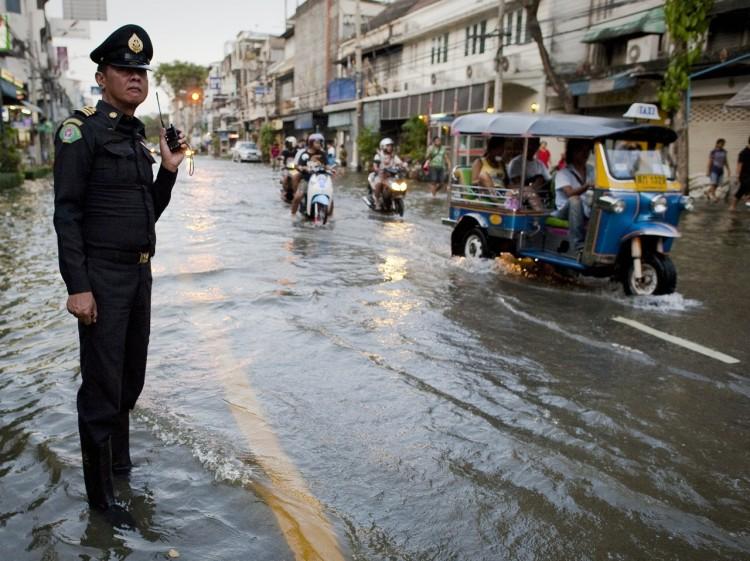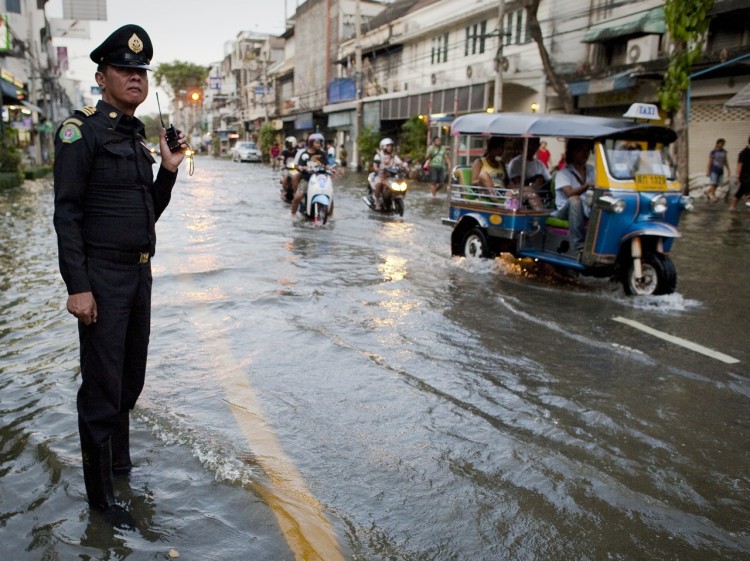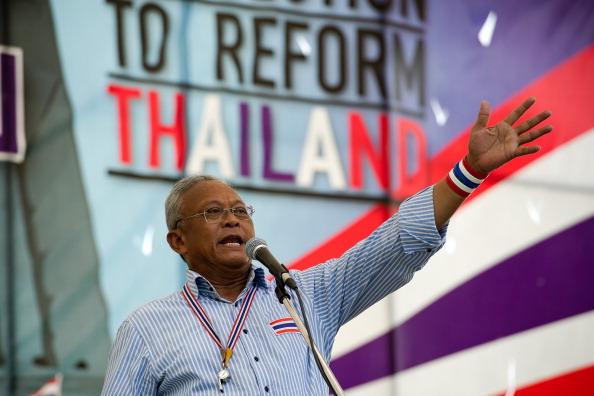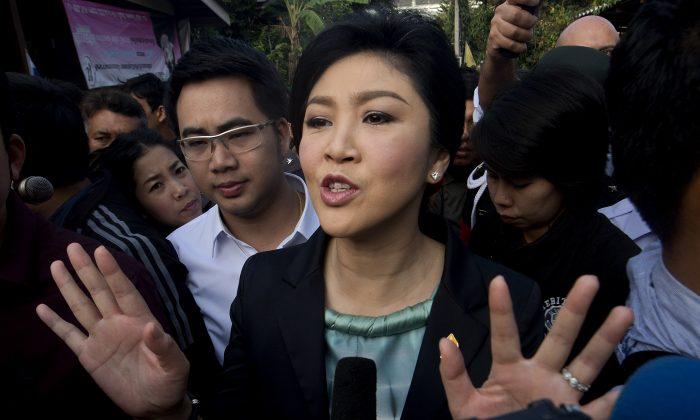Thailand’s prime minister, Yingluck Shinawatra, said on Tuesday that the government had switched to “crisis mode,” the day before a massive runoff of floodwater arrived in Bangkok and a coming high tide due on Friday.
“The massive floodwaters are most likely to overpower barriers and floodgates that protect Bangkok; it is highly possible that water will spill into the areas of central and the outer rings of Bangkok,” Yingluck said in her national televised address on Tuesday night.
According to a Thai government website, Minister of Science and Technology Plodprasop Suraswadi said that if Bangkok does flood, it has been assessed that “stagnant floodwater would remain for about one month, or one month and a half.”
If this city of 10 million people does flood, water could be as high as 3 feet in certain areas.
Already parts of the city’s outskirts have been swamped by the mass of water that has flowed from Thailand’s north, and Bangkok’s second airport, Don Muang, was closed due to floodwaters that broke through barriers on Tuesday.
The airport was also doubling as a flood relief center, housing many flood victims whom have now had to be again relocated. Embarrassingly for the new Thai government, the airport is also the country’s Flood Relief Operations Center.
The city’s main airport remains open and protected from the water.
While thousands of residents have or are trying to leave the Thai capital, the majority are staying put and the government has designated over 150 schools to act as temporary shelters if needed. Officials have also advised residents to move their valuable possessions to higher ground.
Despite being in what is now described as a high-risk flood area in central Bangkok, 31-year-old office worker Aoy Bontham says she won’t leave but she remains concerned.
“I didn’t realize that the situation would be worse until the day before,” said Aoy. “I have prepared some food and water, but it’s for a week or so.”
“As far as I know, some companies have prepared enough food and clean water for their employees who can’t leave, in case they have to stay in the office together for a long time,” she added.
Schools have now been closed until Nov. 7 and a government holiday was announced for Thursday, Oct. 27, till Monday, Oct. 31, in 21 provinces in a bid to allow residents to deal with the flood crisis. Private companies, however, are not officially obligated to give their employees time off.
Outside of Bangkok, flooding has affected a third of the country’s provinces and almost 2.5 million people. The crisis has so far killed over 370 people and the damage bill is expected to be in the billions.
Since late July, Thailand has been suffering heavier than usual monsoon rains that have caused what have been described as the worst flooding the country has faced in five decades.





